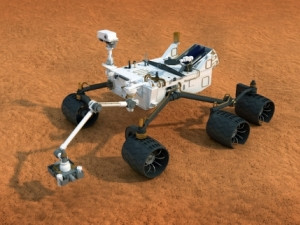
Johannesburg-based tech start-up Ryonic Robotics has been selected to take part in the qualification rounds of the NASA Space Robotics Centennial Challenge.
According to Ryan Beech, MD and chief robotist at Ryonic Robotics, the start-up is the only team from SA to be taking part in the qualifying round. The competition is held online and the robot is controlled in a simulation of Mars.
"We will have six engineers working on the project at once, programming and controlling the robot in the virtual environment. We will, however, fly out to the States should we win or finish in the top three to accept the prize money."
The race is on to land a human on Mars. Elon Musk recently announced plans for his company SpaceX to send people to the Red Planet, swiftly followed by Boeing also declaring it will get to Mars first.
The Space Robotics Challenge tasks teams with developing and displaying the ability of an R5 robot to effectively assist in the procedures of a NASA mission, such as one to Mars, offering a $1 million prize pool for successful teams. The competition involves programming a virtual R5 robot through a series of tasks presented in a virtual environment through the Gazebo software.
The three tasks are aimed to simulate what a robot may be required to do while assisting a NASA mission to Mars, whether in a preparatory capacity before astronauts arrive or alongside astronauts. The first task involves aligning a communications array. The second task involves repairing a broken solar array. The third task involves identifying and repairing a habitat leak.
Winners will be chosen based on their ability to complete these tasks, and each of the steps within them, and how long it takes to complete the tasks.
There will also be a qualifying round, tasking teams to demonstrate autonomous tracking abilities for their virtual R5 robot, which will be required for teams to move towards the main competition, and also have prize money attached to it.
"This challenge has been designed, executed and supported by NASA's Centennial Challenges Programme, within the Space Technology Mission Directorate, as well as Space Center Houston as our Allied Organisation, and Nine Sigma as their partner," says Beech.
Ryonic Robotics was founded in 2014 and is at the forefront of developing the latest robotics technology in the world. The company's first major project was the RMIS inspection crawler that is aimed at the pipeline, oil and gas industries. Other current projects include a magnetic ship hull cleaning robot and a Cobot worker for factory automation and other applications.
"Our core design team includes five hardware and five software engineers. We are currently exporting our locally-designed and -built robots to the US and UK," Beech says. "We have in two years developed robots that are currently being exported to the international market. This is a great achievement for our country and local robotics industry."
The company is trying to create awareness and get young people to study the robotics field as "it is definitely the future". Beech believes the competition will generate a lot of useful exposure and, hopefully, inspire many youngsters to pursue robotics as a career.
Describing the impact of robotics, Beech says the migration of labour to a technological and robotic workforce is inevitable.
"As robotic technology advances, it has, in many instances, replaced jobs that have traditionally been performed by people, which has, unfortunately, resulted in negative perceptions being associated with developments in this field."
He points out that the fear of job losses due to automation is not new and has been around from the early 1700s when the first industrial revolution took place.
"However, while the fear of job losses is a valid concern, particularly in developing countries with high unemployment rates, the potential negative impact can be managed if countries are able to adapt to create these technologies locally.
"In doing so, countries will be able to move away from labour-intensive production methods, enabling them to become more competitive in the global markets."
According to Beech, in SA, the local robotics industry is basically non-existent and this is very worrying considering where the world is moving.
Share